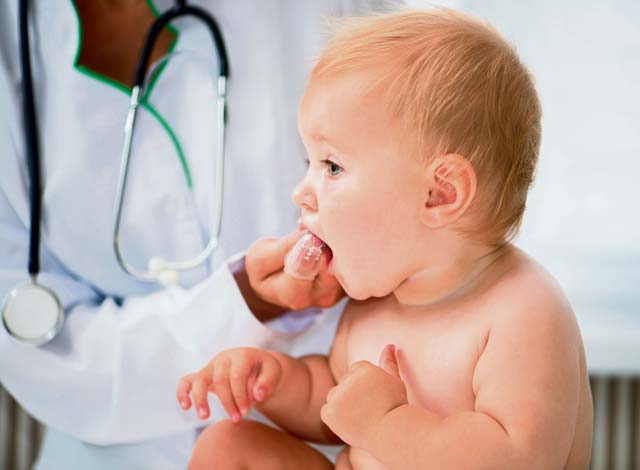
Children to have direct supervision each time they brush their teeth until the child can tie his or her own shoelaces.
Glorious day! A baby is on the way. So much to do and so little time to do it. There are checklists for everything, so you should be good to go, right? Make sure oral hygiene is on your little bundle of joy’s checklist. That’s right. As soon as they get those pearly whites, you need to be prepared to take care of them.
More than 40 percent of children have cavities by the time they reach kindergarten. Early childhood cavities are 32 times more likely to occur in infants who consume a high sugar diet and whose parents have not been taught proper oral hygiene methods.
Cavities in baby teeth can affect children’s growth, which result in significant pain and potentially life-threatening infection, and diminish overall quality of life. Did you know cavities are considered a disease? They are a chronic, infectious and transmissible disease that can easily be prevented with proper oral health care.
Your family dentist has all of the information you need, but here are some helpful hints to start you off.
One thing most parents do not think about is the transmission or passing of cavity-causing bacteria between mother and baby or even between siblings. Something so small as drinking from a sibling’s cup or cleaning off a pacifier with your mouth can transfer the bacteria to the baby. Avoiding saliva-sharing behaviors can help prevent early childhood cavities.
According to the American Academy of Pediatric Dentistry, every baby should get a dental exam from a dentist or qualified health care professional by 6 months of age. This initial assessment should evaluate their risk of developing oral diseases of soft and hard tissues, including a cavity-risk assessment, provide education on infant oral health, and evaluate and optimize fluoride exposure.
Good oral hygiene techniques should start as soon as you see that first baby tooth. Cleaning the teeth as soon as they erupt with a soft toothbrush or wash rag will help reduce bacteria buildup. Tooth brushing should be performed for children by a parent twice daily, using a soft toothbrush of age-appropriate size up to the age of at least 6.
Ramstein’s chief of pediatric dentistry, Col. John Kersey, said he believes a good rule of thumb is for children to have direct supervision each time they brush their teeth until the child can tie his or her own shoelaces. There should be no eating or drinking anything but water after the evening brushing and rinsing. Flossing should be started when you notice the teeth start touching each other or you can’t properly clean the teeth with a toothbrush. Brushing with fluoridated toothpaste and flossing by the parent are important to help get rid of food and reduce plaque.
Some parents are very cautious about the consumption of fluoride. Fluoride is important to all tooth-bearing children and should be given to each with the special consideration of their unique needs.
Fluoride is found naturally in foods we eat every day, and the use of fluoride for the prevention and control of cavities is documented to be both safe and effective. Here is a rule of thumb when trying to figure out how much fluoridated toothpaste to use. In children under the age of 2, a “smear” or “skid mark” of American Dental Association approved fluoridated toothpaste, evidenced by the ADA seal, should be used twice a day. In children ages 2 to 5, a “pea-size” amount is recommended. If you have any questions or concerns, check with your pediatric dental provider.
One last thing that should be addressed is diet. The main culprit of cavities in infants is the night time bottle. It is the root cause of infant tooth decay.
Night time bottle feeding with juice, repeated use of a sippy or no-spill cup, and frequent in-between meal consumption of sugar-containing snacks or drinks (i.e. juice, formula, soda) increase the risk of cavities. When you are asleep your mouth gets very dry. Any fluids given at night will then sit on the teeth, feeding the bacteria in the mouth which may cause cavities if not removed. High-sugar practices start early, by 12 months of age, and are usually maintained throughout early childhood. The American Academy of Pediatrics has recommended children 1 through 6 years of age consume no more than four to six ounces of fruit juice per day, from a cup (not a bottle or covered cup) and as part of a meal or snack.
In a nutshell, make sure you are informed about brushing and flossing your children’s teeth and proper diet. Provide proper oral hygiene practices and you will ensure a better quality of life for your children. Give them their best shot at a happy dental life.


